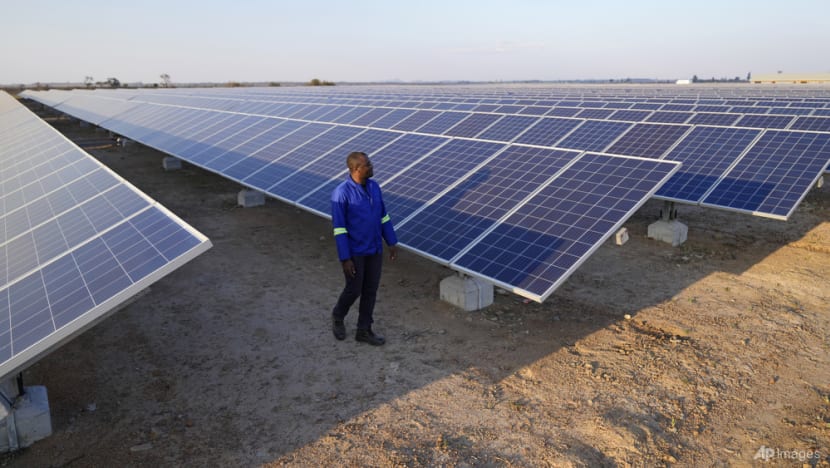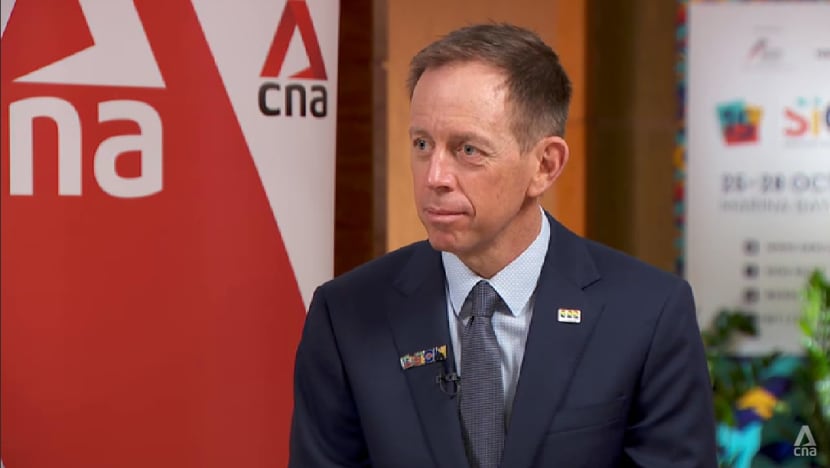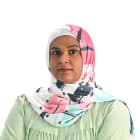‘Humanise’ energy to help people understand roles and choices: World Energy Council chief
While several countries try to find ways to use greener energy, one territory in Australia has been relying only on renewable energy from 2020.

SINGAPORE: Conversations on energy tend to centre around money, carbon emissions and electricity, but there is a need to "humanise" the topic, said the secretary-general of the World Energy Council.
Making the topic more relatable would help people understand how and why clean energy transition matters to them, said Dr Angela Wilkinson, who is also chief executive of the UN-accredited global energy body operating in 100 countries.
"We tend to talk … about energy transition in terms of trillions of dollars or gigatonnes of carbon or megawatt hours of electricity, and it goes right over people's heads," she said in an interview with CNA on Wednesday (Oct 26), on the sidelines of the Singapore International Energy Week.
"We want a useful energy transition and that means we need to humanise it. People need to understand their roles and choices and they need to understand how to play their part."
This would ensure that "we connect the dots between clean, affordable, reliable and sustainable, rather than just trying to think about one of those and risking crisis in the others", said Dr Angela.
Moving towards clean energy also involves "hundreds of thousands" of smaller steps by communities using energy everywhere in the world, she said.
The world has to shift its thinking away from the supply of energy, which is often prioritised by countries, towards demand-driven solutions that require asking people how they use energy.
"If they had more energy, where would that energy add most value to their lives? And then you start thinking about 'if that's the value add, how do I make that affordable?'," she said.
ACHIEVING 100 PER CENT RENEWABLE ENERGY
While solutions to tap renewable energy are being explored by several governments to combat climate change and ensure energy security, one Australian district is already living the dream.
The Australian Capital Territory (ACT), home to about 456,000 people, has been running completely on renewable energy since 2020.
"Wind and solar farms around our city now supply our territory with all of our electricity needs. This is a great example of what's possible if governments set clear goals," ACT's Minister for Water, Energy and Emissions Reduction, Shane Rattenbury, told CNA.
The change happened as leaders set ambitious, but clear, targets to reduce carbon emissions and tackle climate change, while gaining support from the civil service and business community, he said.
"I think a lot of people didn't expect that we could," said Mr Rattenbury.
The territory's reliance on clean energy also gives it some degree of energy security and price stability, at a time when electricity prices are increasing quickly in other parts of Australia, he added.
Ongoing 20-year contracts with renewable energy suppliers guarantee the ACT steady electricity prices, which are the lowest in the country.

Mr Rattenbury advised countries and cities to create a well-connected grid that integrates different sources of energy in various geographic regions.
"We will see some areas will have better resources for solar, more sunshine, others will have better wind resources. And of course, they will generate at different times," he said, adding that such a diversity of sources strengthens energy security.
GETTING BUY-IN FOR CLEAN ENERGY TECHNOLOGY
Trialling new clean energy technologies is one way for countries to move towards a greener future, but buy-in from big industry players has not been forthcoming, said Mr Andre Stolz, chief operating officer of Singapore-based clean tech firm EcoWorth Tech.
"A lot more needs to be done and that is where startups can come in to play different roles of bringing truly revolutionary technologies to the market and make an even bigger impact, versus the technologies that are out there since decades (ago)," he said.
He acknowledged however that it can be challenging for these new technologies to be adopted by big players, who are risk-averse and do not want to be the first movers.
This is especially so for Asian firms, said Mr Stolz.
"They look at counterparts maybe in Europe or the US where they have a bigger leadership role and … then try to adapt readily available solutions, which makes it a bit more difficult for us to be adopted, " he said.
"But that's maybe an opportunity for these companies here in Asia to make a step ahead and to accelerate their decarbonisation plans.”
















